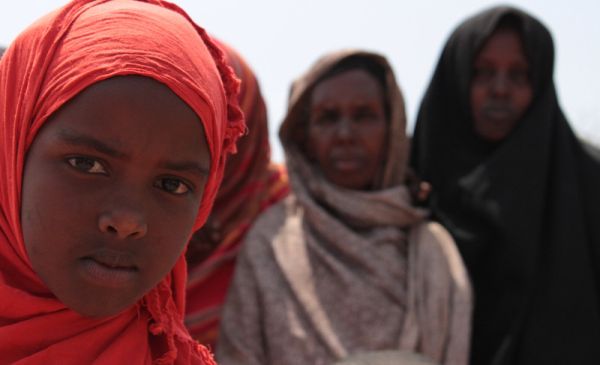
The UN announcement of famine in Somalia is both a wake-up call to the scale of this disaster, and a wake-up call to the solutions needed to limit death-from-hunger now and in the future. So, what is famine and how can we prevent it?
Famine is the “triple failure” of (1) food production, (2) people’s ability to access food and, finally and most crucially (3) in the political response by governments and international donors. Crop failure and poverty leave people vulnerable to starvation – but famine only occurs with political failure. In Somalia years of internal violence and conflict have played a huge role in creating the conditions for famine.
What is famine?
The UN uses a five-step scale, called the Integrated Food Security Phase Classification (IPC), developed with NGOs including Oxfam, to assess a country’s food security. Stage 5 – “famine/humanitarian catastrophe” – means that more than two people per 10,000 are dying each day, acute malnutrition rates are above 30%, all livestock is dead, and there is less than 2,100 kilocalories of food and 4 litres of water available per person per day.
In October 2009 Oxfam published a paper on Ethiopia and neighbouring regions asking “what can be done to prevent the next drought from becoming a disaster?” We acknowledged that food aid saved lives but that it was neither cost-effective nor sufficient on its own to help people withstand the next shock.
By the time the UN calls a famine it is already a signal of large-scale loss of life. We can only ensure now that aid comes quickly and appropriately to prevent an even worse-case scenario.
We must also resolve not why this famine happened, but why again? And how do we prevent the next one?
The causes of famine
Famines result from a combination “triple failure”:
- Production failure: In Somalia, a relentless two-year drought has caused record food inflation, particularly in the expectation of the next harvest being 50% of normal. Somalia already had levels of malnutrition and premature mortality so high as to be in a “normalised” state of permanent emergency. This is true too in pockets across all of East Africa.
- Access failure: The drought has killed off the pastoralists’ prime livestock assets (up to 90% animal mortality in some areas), slashing their purchasing power even further. Furthermore, Somalia’s severe internal conflict has made development almost impossible to achieve and accurate information difficult to access.
- Response failure: Underlying it all has been the inability of Somalia’s government and other governments to tackle the country’s chronic poverty, which has marginalised vulnerable people and weakened their ability to cope. There’s been a lack of investment in social services and basic infrastructure, and inadequate governance. Meanwhile governments have reacted too late and too cautiously. The overall international response to this humanitarian crisis has been slow and insufficient. According to UN figures, $1 billion is required to meet immediate needs. So far donors have committed less than $200m, leaving an $800 million black hole.
How does this situation compare with current food crises in other parts of the world?
This famine represents the most serious food insecurity situation in the world today in terms of both scale and severity.
What needs to be done?
Now is the first time in human history that we have the power to eradicate famine. To do so, we must address the underlying problems:
- We must step up investment in African food production. There are regions in Africa we know have always faced chronic food shortages, where even small blips in harvests can have terrible consequences. We need more support for small-holder farmers and pastoralists (e.g. hardier crops, cheaper inputs, disaster risk management).
- We must ease rural African poverty. More aid and budgetary investment into physical infrastructure (roads, communications etc) and allowing public intervention to correct market failures until markets are stronger (e.g. grain reserves to stop price volatility).
- We need to move away from discretionary assistance to guaranteed social protection, such as social assistance to the poor households to access food throughout the year, and insurances so support can be triggered automatically in times of crisis. In some contexts cash transfers can be more appropriate than food aid, where availability of food is not a problem.
Emergency aid is vital right now, but we also need to ask why this has happened, and how we can stop it ever happening again. The warning signs have been seen for months, and the world has been slow to act. Much greater long-term investment is needed in food production and basic development to help people cope with poor rains and ensure that this is the last famine in the region.
Oxfam is now responding to the East African crisis by providing life-saving water, sanitation services, food, and cash. We aim to reach at least 3 million people, including 700,000 in Ethiopia, 1.3 million in Kenya, and 500,000 in Somalia. Please donate to help.